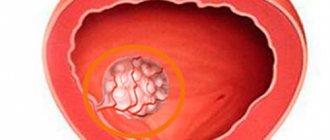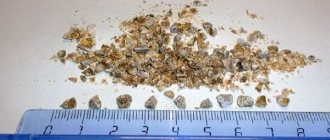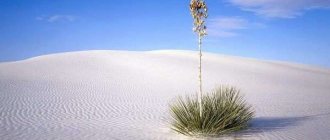Treatment of sand in the bladder can eliminate unpleasant symptoms and prevent the development of complications that manifest themselves in the form of large stones. However, it is also important to exclude factors that provoke the appearance of sediment. Both men and women are almost equally susceptible to this disease. Stones are much more difficult to remove, so it is better to treat sand in the bladder at an early stage of the development of the pathology.
Treatment of sand in the bladder can eliminate unpleasant symptoms and prevent the development of complications that manifest themselves in the form of large stones.
Causes
Neoplasms do not form on their own. Sand is formed for a number of reasons:
- Congestion in the bladder. In this case, there is a violation of the outflow of urine. In men, this condition accompanies certain pathologies of the genital organs, such as prostate hyperplasia. In women, congestion develops during pregnancy, when the bladder is affected by the uterus, which gradually enlarges.
- Infectious diseases of a bacterial nature. This is the most common factor among women, due to the peculiarities of the anatomy (the close location of the urethra to the vagina and anus).
- Presence of sand and stones in the kidneys or ureter. Then the stones move along a descending path.
Provoking factors
In addition to the main reasons, there are also conditions under which the appearance of suspension or deposits in the bladder develops more intensively. These include:
- Vitamin D deficiency.
- Performing procedures to get rid of stones.
- Pregnancy period (1st trimester). In this case, sand in the bladder appears due to toxicosis; this condition is accompanied by dysfunction of the digestive system.
- Poor nutrition. Eating salty foods, spicy foods, and smoked foods is harmful.
- Lack of fluid in the body, which provokes congestion in the bladder.
- Pathological conditions of the gastrointestinal tract of a chronic nature.
- Genetic predisposition. The likelihood of developing pathology increases if one of the family members suffers from urolithiasis.
- Impaired metabolism.
Symptoms of sand in the bladder
The pathological condition often does not manifest itself at all. As the amount of deposits increases, as well as their size, symptoms arise:
- frequent urge to urinate, which is due to the increased salt content in the liquid;
- unpleasant sensations during urination (itching, burning);
- the urine becomes cloudy and sediment appears.
If the sand particles have sharp edges, the mucous membrane of the organ may be injured, which causes blood to appear in the urine. Gradually, the deposits combine into stones. Larger sand particles reach 3-4 mm in diameter. When moving, such formations contribute to the appearance of pain. There is a feeling of heaviness in the bladder area.
Frequent urge to urinate, due to the increased salt content in the fluid.
If sand gets into the ureter, there is a high probability of renal colic. Sometimes this causes vomiting and nausea. Symptoms of stone development in the kidneys and bladder are similar. The difference lies in the localization of pain. With renal colic, the pain spreads further - to the lumbar spine.
As sand particles increase in size and become dislodged, they can move through the urinary canal. Signs of the release of such formations: a sudden cessation of the process of urination, a feeling of discomfort. If you take a horizontal position, you can feel relief.
Features of the course of the disease in men and women
Sand in the bladder often occurs in both sexes. However, it has been noted that men are several times more susceptible to this disease.
Over time, deposits in the bladder form into stones. If the disease develops in a woman, there is a high probability that staghorn calculi will appear. Pain can radiate to different organs. For example, men feel discomfort in the penis. In the fair sex, the pain radiates to the labia.
Prevention and treatment prognosis
If treatment is started in a timely manner, the chance of a full recovery is good - sand does not cause as much harm as stones. Operable cases require more recovery time, but then the body is completely rehabilitated.
A natural question arises about the possibility of relapse: how to avoid the reappearance of sand in the bladder? Prevention in this case is quite simple and is aimed at maintaining a healthy lifestyle. The necessary conditions:
- regular gymnastics;
- healthy diet - exclude fatty and salty foods;
- monitor vascular health;
- do not overload the pelvic muscles;
- prevent the development of infectious diseases of the genitourinary system.
Regular testing will help you gain confidence in the healthy future of your body. It is useful to take preventive medications periodically, possibly on a herbal basis.
Diagnostics
Methods to identify the pathological process occurring in the bladder:
- general urine analysis;
- ultrasound diagnostics.
Based on the results of the analysis, the composition of the urine is assessed. Ultrasound allows you to determine the presence of sand, the degree of damage to the kidney parenchyma, and identify congestion in the bladder. At a later stage of the urinary system disease, when stones begin to form, the doctor may order an x-ray. Thanks to this method, the location of the stones and their sizes are determined.
Ultrasound allows you to determine the presence of sand, the degree of damage to the kidney parenchyma, and identify congestion in the bladder.
To exclude the development of other diseases, a general blood test and ultrasound of the abdominal organs are additionally prescribed.
Diagnosis of sand in the bladder and kidneys
A common cause of stones found in the bladder is a similar kidney disease. The following diagnostic stages help doctors formulate the correct opinion:
- Ultrasound is the most reliable way to detect renal masses. The downside is that sand, due to its microscopic size, is noticeable only at high concentrations. At the initial stage, such an examination may give an incorrect diagnosis.
- Urinalysis provides more information about impurities and reveals pathological changes faster.
- Computer scanning is becoming a popular method for finding sand in the kidneys (radioisotope nephroscintigraphy).
- Urography has a good percentage of identifying problems at an early stage.
- X-ray allows you to monitor the exit of sand from the kidneys in order to accurately understand its position and the severity of the disease.
- Inflammatory processes in the kidneys are studied using biochemical analysis.
When diagnosing sand in the kidneys, you should not worry too much - surgical methods are used only in extreme cases, usually treated with conservative treatment.
Treatment
If specific symptoms appear, you should consult a urologist. On the recommendation of a doctor, complex therapy is carried out.
If sand is found in the bladder, it is recommended to take diuretics, but this should be done in the first half of the day.
It is necessary to exclude the possibility of stagnation of urine, therefore, with this disease, drink a lot of fluid - at least 2 liters per day.
It is necessary to exclude the possibility of stagnation of urine, therefore, with this disease, drink a lot of fluid - at least 2 liters per day. You can't drink hard water. This means that it is better to exclude mineral and untreated water from the tap.
Medicines
If a persistent metabolic disorder is detected, which has caused the appearance of deposits in the bladder, this pathology may be accompanied by an inflammatory process. It is recommended to take drugs from several groups:
- Antibacterial agents. These include Furazolidone, Norfloxacin, etc.
- Drugs involved in regulating blood circulation, including in the bladder area. The most effective is Pentoxifylline.
- Means that help remove sand from the bladder: Cyston, Olimethine, Uroflux.
It is recommended to take medications to treat sand in the bladder.
Folk remedies
Self-administration of diuretics can cause blockage of the urethra if large stones have formed in the bladder. You must act in consultation with your doctor. Additionally, anti-inflammatory drugs and herbs with antiseptic properties can be used. Effective means:
- rosehip tea;
- diuretic collection: cornflower blossom, bearberry, birch buds and parsley root;
- a combination of bearberry and juniper;
- multi-component collection: linden blossom, coltsfoot grass, lingonberry leaves, raspberry and anise fruits.
Diet with sand
Avoid foods that irritate the mucous membranes of organs: spicy, smoked, fatty, highly salted.
The details of the diet should be discussed with your doctor, as it may vary depending on the composition of the stones.
Food is consumed in small portions. Key recommendations: proper nutrition and drinking regime. Liquids begin to be consumed from 4 a.m. until lunchtime. Limit the amount of salt (up to 0.5 tsp per day). Based on the test results, a diet is prescribed. Sometimes it is necessary to limit foods containing calcium: milk, cottage cheese, cheese, herbs and fruits. In other cases, meat is introduced.
If the test results reveal that the body contains phosphate particles, you need to give up mineral water. Groups of foods that are prohibited in any diet: marinades, smoked foods, alcohol, pickles, chocolate and cocoa.
How to get rid of sand in the bladder
Removing protein-crystalline deposits from the urinary system and restoring metabolism are the main therapeutic goals for microlithiasis.
Before you remove sand from the bladder, you need to determine its cause. Elimination of all provoking factors prevents the progression of the disease and the formation of large stones.
Various methods are used for treatment:
- drug therapy;
- hardware procedures;
- diet therapy;
- Exercise therapy.
Nutrition and drinking regime
Sand may contain oxalates, urates, phosphates or mixed types of microliths. Therefore, dietary restrictions depend on the form of microlithiasis:
- Oxalates consist of ethanedioic acid crystals. To prevent their formation, products with ascorbic and ethanedioic acid are excluded.
- Urates contain uric acid crystals. To dissolve them, use products that alkalinize the urine.
- If the sand contains phosphates, you need to add products to the menu that shift the urine pH to the acidic side.
Principles of the diet for sand in urine:
- eat fractionally 4-5 times a day;
- exclude fasting and overeating;
- refuse processed foods and fatty meats;
- limit salt to 3-4 g/day;
- exclude frying vegetables and meat.
It is recommended to treat microlithiasis with mineral waters. To speed up the leaching of sand from the urinary ducts, drink at least 1.5 liters of free liquid per day. The choice of mineral water is influenced by the type of microlites:
- urate – Jermuk, Essentuki 17, Borjomi, Smirnovskaya;
- oxalate – Naftusya, Sairme, Essentuki 20;
- phosphate – Arzni, Bukovinskaya, Truskavetskaya, Dolomite Narzan.
Following a diet guarantees the washing away of sand, weight loss and normalization of metabolism.
Medications
Pharmacotherapy is aimed at dissolving sand, normalizing urine pH, and improving urinary drainage. The treatment regimen includes:
- Urolesan - stimulates blood circulation in the pelvic organs, eliminates inflammation, normalizes the tone of the bladder, removes small stones and sand;
- Canephron N – enhances urination, relieves pain, eliminates pathogenic bacteria and inflammation;
- Cyston - dissolves sand, which consists of mineral components;
- Uroprofit – has an antimicrobial effect on the urinary ducts, stimulates the healing of mucous membranes;
- Phytolysin - relieves pain and inflammation, removes sand from the bladder and increases local immunity;
- Avisan – relaxes the muscles of the urinary ducts and facilitates the passage of sand;
- Phytolit – enhances urination, regulates mineral metabolism and disinfects the mucous membrane of the urinary ducts.
For hematuria, uroseptics are additionally prescribed - Furazidin, Nitrofural, Cinoxacin. They destroy pathogenic bacteria in the urinary ducts and bladder, which reduces the risk of cystitis and urethritis.
Traditional medicine
If there is sand in the bladder, long-term herbal medicine is recommended. To dissolve microconcretions, the following are used:
- Birch. 1.5 tbsp. l. Birch buds are poured with ½ liter of hot water. Leave in a thermos for half a day. The infusion is taken 50-70 ml up to 6 times a day.
- Rose hip. 2 tbsp. l. Boil dried fruits for 10 minutes in 1 liter of water. Drink 100 ml of the decoction three times a day before meals.
- Linden. 2 tbsp. l. Boil the flowers in 400 ml of water for 5 minutes. Take 3 hours before bedtime for 1-2 months.
- Horsetail 1 tsp. steam 250 ml of water. Leave for 20 minutes and strain. Drink instead of tea twice a day.
No less effective are decoctions of other diuretic herbs - bearberry, parsley root, lingonberry leaves.
Physiotherapy
A sedentary lifestyle increases the risk of stone formation. Therefore, exercise therapy is an important component of the treatment of microurolithiasis. Sports activities:
- accelerate blood circulation in the pelvic organs;
- normalize metabolism;
- increase the tone of the bladder;
- strengthen general and local immunity.
To prevent urolithiasis, it is recommended to do yoga, fitness or gymnastics. Daily half-hour exercises will reduce the likelihood of sand deposits in the bladder by 2-3 times.
Possible complications
If the sand is not removed from the bladder, the deposits will form into larger stones. As a result, urolithiasis will develop.
The principle of its treatment is more complicated, since in this case it is necessary to crush the stones in the bladder. Sand is the cause of frequent diseases of the female genital organs.
Small stones provoke the development of cystitis. This is due to the fact that the particles move inside the bladder and touch its walls. Considering that urine containing harmful microorganisms accumulates in this organ, the risk of developing an inflammatory process increases. Sand in the bladder also provokes urethritis. In this case, the stones pass through the urethra. They deform its membranes; larger formations can cause blockage of the urethral excretory sphincter.
How does sand come out of a urinary tank?
Manifestations of microlithiasis are nonspecific and similar to the symptoms of urolithiasis. Most often, men complain of dysuria, which is due to the structural features of the genitourinary system. The narrow urethra passes through the penis and has narrowings in the area of two S-shaped bends. Therefore, symptoms in men are more pronounced than in women.
Symptoms of sand coming out of the bladder:
- painful urge to urinate;
- burning in the urethra when urinating;
- sediment in urine;
- partial emptying of the bladder.
If microlithiasis is combined with inflammation of the bladder or urethra, complaints of excessive sweating, lack of appetite, and fatigue arise.
The passage of microconcrements through the urethral canal provokes pain that spreads to the groin area.
Disease prevention
During treatment, the patient follows a diet.
If a person has already encountered stones in the bladder once, statistics show that the probability of recurrence is 50%. This occurs as a result of a change in diet, a return to previous habits. During treatment, the patient follows a diet and leads a healthy lifestyle. If the disease has been overcome, the person relaxes psychologically and stops limiting himself so harshly. As a result, after a few months/years the disease will develop again. To prevent a relapse, you need to adhere to a number of rules:
- After completion of therapy, it is necessary to continue drinking large amounts of fluid (1.5-2 liters per day). This reduces the concentration of minerals in urine, eliminating the likelihood of developing congestion in the bladder.
- The diet should contain foods rich in vitamin C.
- Apple juice helps reduce the amount of oxalates in your urine.
- Whole grain products are introduced into the diet.
- Legumes, on the contrary, should not be consumed, as they contribute to the formation of stones.
Depending on the composition of the deposits, some foods are introduced or excluded from the diet.
This diet should be followed after the end of treatment. So, if the sand contains excess calcium, limit foods rich in this compound. If oxalate stones are present, remove chocolate, cocoa, tea, coffee, soy, meat and nuts from the diet. If the stones contain cystine, meat should also be excluded.
Treatment prognosis and prevention
With proper treatment, it is possible to completely clear the urinary tract and bladder of sand. But the likelihood of relapse of microlithiasis and its transition to urolithiasis depends on compliance with preventive measures.
To wash away sand from the organs of the urinary system, you need to drink 1.5-2 liters of water per day.
To prevent stone formation, you must:
- eat a balanced diet;
- use filters to soften water;
- to refuse from bad habits;
- timely treatment of urological diseases;
- avoid a sedentary lifestyle.
People with a predisposition to metabolic disorders need to follow a therapeutic diet throughout their lives. It is recommended to take general and biochemical urine tests 1-2 times a year. Competent and timely therapy prevents stone formation in the bladder and other organs of the urinary system.









